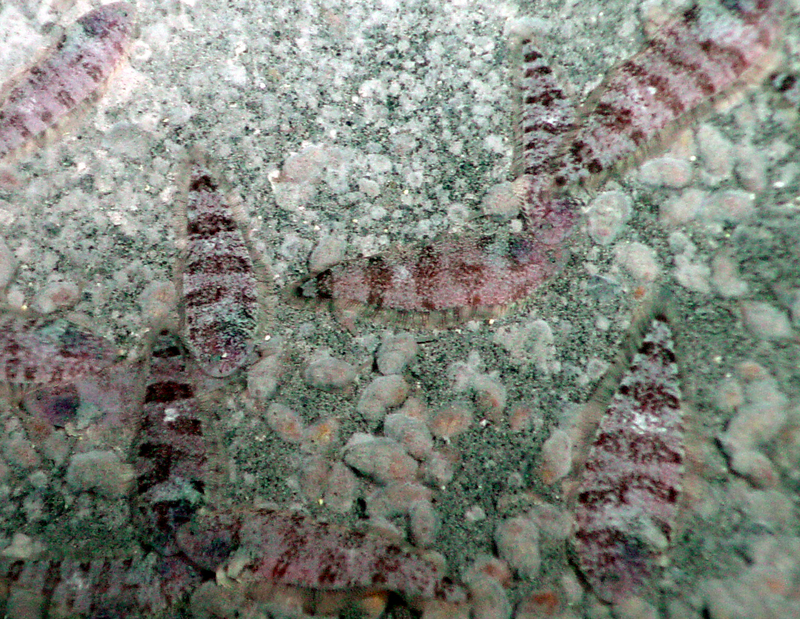Flatfishes On Daikoku seamount, flatfish are very abundant on sediments that also harbour snails feeding on bacterial mats.
http://www.oceanexplorer.noaa.gov/explorations/06fire/background/biology/media/flatfish.html
.....
The Mariana Tonguefish
During the SROF 2004 cruise, dense aggregations of a small flatfish were seen on Kasuga-2 and Daikoku Seamounts - flatfish are not part of vent faunas elsewhere. The fish is a new species, currently under description (Tom Munroe, Smithsonian). On a second visit to the region with our Japanese colleagues, we collected specimens from Kasuga-2, Daikoku and Nikko Seamounts. The Nikko flatfish were about twice as large as the flatfish from either Kasuga-2 or Daikoku. Current molecular work (using the Barcode of Life Data System) will determine the relationship among these populations - and verify that they are the same species. We will undertake otolith analyses (tiny head bones that record daily growth) to understand growth rates and age structure. The observed size differences might reflect differences in food availability between the three seamounts, as Nikko Seamount appeared far more productive. However, the smaller fish may represent recent colonization events.
During SROF 2006, we will repeat collections to examine seasonal differences and we will search for new sites to support studies on population relationships over broad distances. Collection will also support stable isotope work to determine the food sources for these fish. Under the microscope, the sandy sediments from the fish habitat are full of filamentous, likely chemosynthetic, bacteria and tiny nematodes. Our current hypothesis is that the fish are probably feeding on both, and thus ultimately supported by chemosynthesis since the nematodes are also likely feeding on the bacterial filaments. Stable isotope and lipid analysis of samples from these "fish spas" are currently underway.
....
